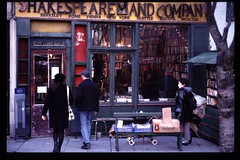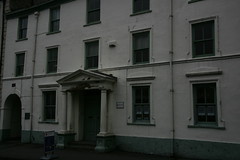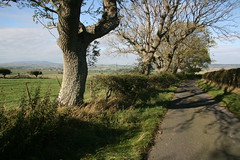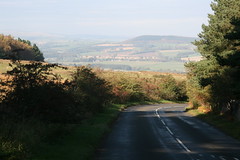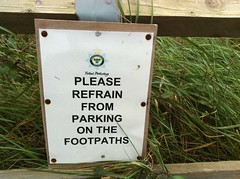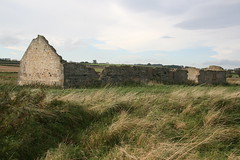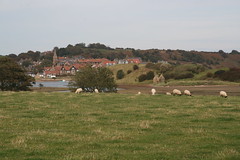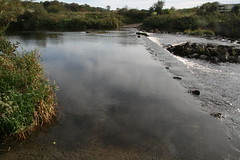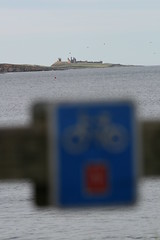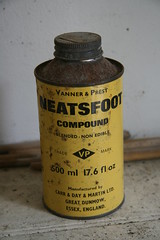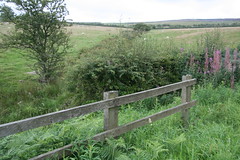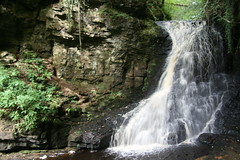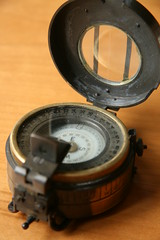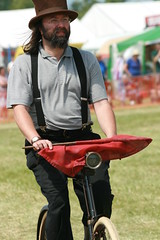What I didn't have a good feel for is how well other aspects of the map are covered. I like to measure stuff, so in the down-time between Christmas and New Year, I've been playing around estimating how many examples of different features we should expect to find in the database, and comparing that estimate to how many are actually recorded.
This is inevitably a bit rough and ready. I needed to estimate how many examples of a feature I should expect to find. Then I needed to figure out a simple way of measuring how many are already in the database; with a reasonable level of confidence that both figures are counting the same things. This doesn't always work. For various reasons it turns out that it's not straightforward to measure things like the number of public telephones, airports, windmills, car parks, cemeteries, and sports grounds. I've included some figures on facilities like restaurants, and hotels, but I suspect that the definitions used in different statistics might not be a very good match to the definitions used by contributors. With more care I might be able to improve these in future.
Still, it's a starting point, and with all sorts of caveats, I think I can identify some features that users of the data can generally expect to find already exist in the database:
Feature
|
Found
|
Estimate
|
Completeness
|
Bus stations
|
498
|
427
|
117%
|
Theatres
|
809
|
742
|
109%
|
Marinas
|
458
|
436
|
105%
|
Petrol stations
|
6,451
|
6,301
|
102%
|
Police stations
|
1,985
|
2,036
|
97%
|
Toilets
|
4,441
|
4,714
|
94%
|
Fire stations
|
1,500
|
1,642
|
91%
|
Feature
|
Found
|
Estimate
|
Completeness
|
Museums
|
1,505
|
1,766
|
85%
|
Supermarkets
|
6,681
|
7,970
|
83%
|
Libraries
|
2,462
|
3,206
|
77%
|
Hotels
|
5,762
|
7,561
|
76%
|
Cinemas
|
578
|
763
|
76%
|
Schools
|
22,969
|
33,121
|
69%
|
Pubs
|
32,472
|
49,303
|
66%
|
Cafes
|
7,481
|
12,140
|
62%
|
Breweries
|
110
|
180
|
61%
|
A and E (England)
|
91
|
150
|
61%
|
Allotments
|
3,936
|
7,286
|
54%
|
Post Offices
|
7,372
|
14,000
|
53%
|
Cycle shops
|
1,253
|
2,500
|
50%
|
The list of features that I explored is deliberately pretty arbitrary. I covered some that I happen to be interested in; some where I had an estimate to hand, or could easily uncover one; some drawn from OSM project of the month / week activity, and others because I thought they might be of interest to contributors, or of value to map users. The following list shows some where it looks as though contributors will find it fairly easy to find additional examples to add to the map.
Feature
|
Found
|
Estimate
|
Completeness
|
Pret a manger stores
|
115
|
235
|
49%
|
Starbucks stores
|
330
|
717
|
46%
|
Restaurants
|
10,043
|
25,226
|
40%
|
Ice rinks
|
13
|
33
|
39%
|
Night clubs
|
548
|
1,507
|
36%
|
Hostels
|
454
|
1,260
|
36%
|
Golf courses
|
709
|
2,002
|
35%
|
Letter boxes
|
39,329
|
116,092
|
34%
|
Swimming pools
|
217
|
641
|
34%
|
Anglican churches
|
4,880
|
15,976
|
31%
|
Veterinary clinics
|
363
|
1,271
|
29%
|
Garden centres
|
733
|
2,621
|
28%
|
Community pharmacies
|
3,732
|
13,425
|
28%
|
Lifeboat stations
|
31
|
135
|
23%
|
Casinos
|
37
|
180
|
21%
|
GP surgeries
|
2,036
|
10,352
|
20%
|
Bowling alleys
|
103
|
528
|
20%
|
Convenience stores
|
7,972
|
48,289
|
17%
|
Sewage works
|
808
|
5,412
|
15%
|
Branches of Greggs
|
193
|
1,526
|
13%
|
Fish and chip shops
|
1,334
|
11,000
|
12%
|
National Trust properties
|
278
|
2,477
|
11%
|
English Heritage properties
|
64
|
584
|
11%
|
Shops of all types
|
47,797
|
458,275
|
10%
|
Piers
|
3
|
33
|
9%
|
Hairdressers
|
2,729
|
35,704
|
8%
|
Bookmakers
|
402
|
5,029
|
8%
|
Dentists
|
722
|
10,927
|
7%
|
Charity shops
|
559
|
9,000
|
6%
|
Newsagents
|
801
|
16,500
|
5%
|
Unsurprisingly, my impression is that coverage is generally better for the bigger features that are more obvious (e.g. schools), and for those which particularly interest the OSM community (More pubs than post offices. More bicycle shops than golf courses. Surprisingly few fish and chip shops, though there are some tagging variants that would slightly boost coverage of these if I collected them more systematically). Some of the services that potential users might expect to find are not so well covered (e.g. GPs and dentists).
Even if they are rough and ready, I think it has been useful to put numbers on some of this stuff. Partly because it helps to measure progress, partly to help think laterally about priorities, and partly as a sanity check on the amount of detail that is both practical and important. And not least because it already demonstrates an impressive level of coverage. However, there is no shortage of opportunity to record the existence of more interesting and useful features in 2012. You can bet on seeing more casinos and bookmakers; while other contributors get their teeth into the missing dentists.
I'll probably come back to this again. It's a bit of an iterative process, and if anyone wants to suggest a better estimate, a source of suitable data, or other features that I should try to measure, then please comment below.
